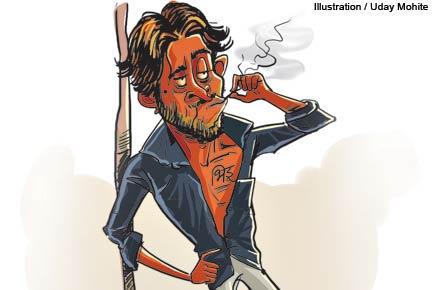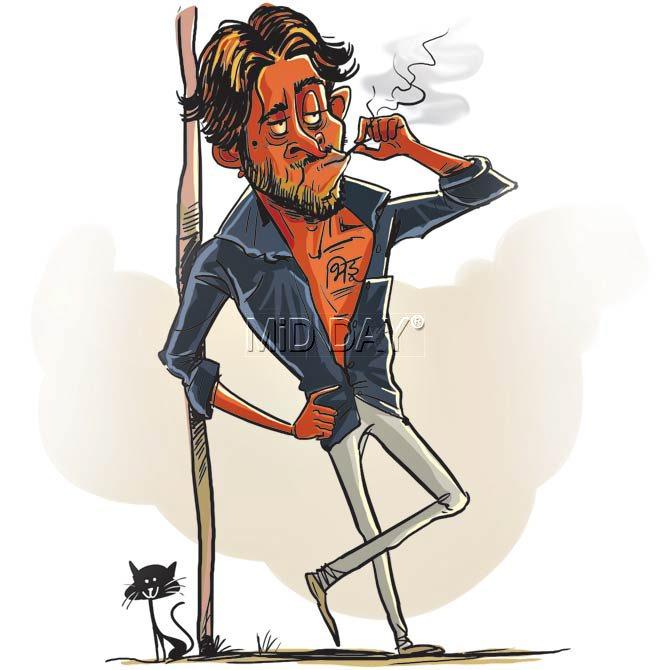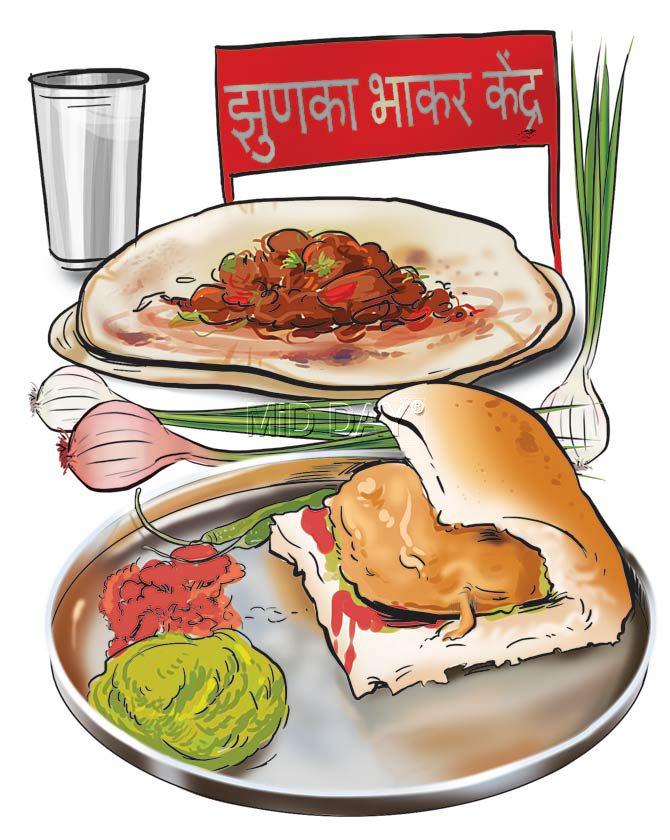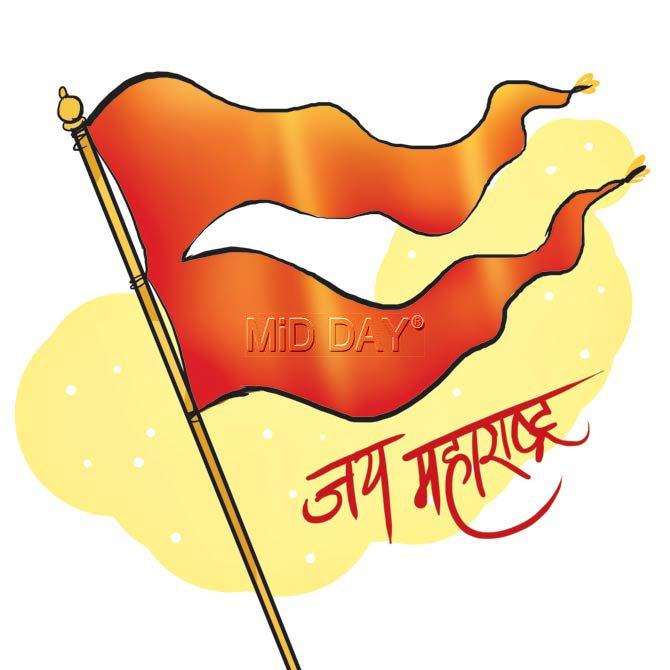A look into how terms from the Marathi lexicon have been adopted into popular culture, heavy with political meaning

 The Bombay High Court termed the Marathi word ghati as an offensive term, one that can be “interpreted as an insult by many across the state.” The famed British lexicographer J T Molesworth deconstructed it otherwise. His compendium of Marathi words, published in 1863 and now available in its tenth corrected edition (2013), characterises ghati or ghatval as “relating to the Desh or country above the Sayhádri hill range.” This word was used by the Konkanis (in Mumbai and Konkan) to rebuke the gauche ways and country accent of those from the ghats. As late as 2006, Navi Mumbai witnessed riots over ghati outsiders taking away jobs from the Agri and Koli settlers.
The Bombay High Court termed the Marathi word ghati as an offensive term, one that can be “interpreted as an insult by many across the state.” The famed British lexicographer J T Molesworth deconstructed it otherwise. His compendium of Marathi words, published in 1863 and now available in its tenth corrected edition (2013), characterises ghati or ghatval as “relating to the Desh or country above the Sayhádri hill range.” This word was used by the Konkanis (in Mumbai and Konkan) to rebuke the gauche ways and country accent of those from the ghats. As late as 2006, Navi Mumbai witnessed riots over ghati outsiders taking away jobs from the Agri and Koli settlers.
ADVERTISEMENT

Illustrations /Uday Mohite
Ghati’s dual identity is rooted in the Konkani-versus-Ghati friction and also in the migrants-vis-a-vis-Maharashtrian debate. It is a homogenised reference for all locals as seen in books like Breathless In Bombay and Such A Long Journey. The potential of ghati, which the court has underlined, has inspired us to craft a glossary of Marathi expressions that have gained colourful connotations in the mainstream public discourse — colloquialisms co-opted in a Bollywood lexicon or simple words turned into loaded carriers of political agenda.
Amcha Bollywood
Among the terms which took the Bollywood route, Ata Mazhi Satakli (Now I have lost my temper) from Singham tops the chart. It was middle-class anger against smugglers and assassins, of the Ajay Devgan scale. Similar in stature stands Dushman ki Vaat Lavli (Vanquished the enemy) from the Hindi film, Bajirao Mastani. Bajirao also underwent a cultural makeover. What once signified a bit of bombast and a philanderer, now is a chiselled Maratha warrior in the league of Ranveer Singh. Bajirao’s prestige upgrade co-relates with Dajiba’s downfall over a decade ago after the lavani, Aika Dajiba projected the winking male lead — no longer a father figure.

Marathi street lingo gained a permanent gate pass in Hindi film-land at the beginning of the 21st century when Sanjay Dutt films embraced endearing cusswords — tapori, bhidu, yeda and shana. Aayla formed vibrant semi-phallic parlance in realistic screenplays featuring chawl or slum life.
Bai politics
Aiyyaa and agabai came into national consciousness when actresses Rani Mukerji and Priyanka Chopra used these sweet-nothings to capture feminine wonderment. Before Mukerji’s Hindi film Aiyyaa, the effiminite guy in the vicinity or on celluloid was teased with, Aiyyaa!

Bai lies at the core of many social exchanges owing to its textured history. In the pre-Independence era, Bai denoted respect; like in the case of Ahilyabai Holkar or Mogubai Kurdikar. As Mumbai started shaping into a metropolis, Bai metamorphosed into a workforce term; either the bespectacled grammar teacher or the sari-clad top servant. Bai progressed in stature after the eighties when thespian Vijaya Mehta elevated her Bai status in experimental theatre and parallel cinema circles; the Bai school of thought was advocated in her autobiography and numerous media interviews. Bai got another boost in October 2015, when a Marathi-Hindi remix number on Youtube presented Shantabai as a sex siren. As the audio track was superimposed onto steamy videos, the Shantabai construct underwent an interesting cultural passage.
As this columnist asked nondescript lyricist Sunil Londhe to look back at Shantabai’s stardom, he said he was embarrassed that Shantabai was seen as a “hot woman”, but happy that she wasn’t a maid.
Cuisine Wise
As the misal pav served at a Dadar restaurant was named the world’s tastiest vegetarian dish at London’s Foodie Hub Awards, the misal became the face of Marathi cookery and entrepreneurship. The vada pav crossed over as the Mumbai burger.

Both were marketed as iconic traditional dishes close to the Marathi self-image. But for Maharashtrians, the vada and the misal operated in a different pedestrian context. The vada (a low-wage earner’s quick dry meal) was sought to be replaced by the more nourishing zunka-bhakari. The Shiv Sena-led government in 1995 floated the (R1 per plate) zunka bhakar scheme to popularise the native delicacy. The scheme was abandoned (2007) as the bhakari stalls started vending fast-food. Years later, the Sena launched the Shiv Wada scheme. As they embraced the deep-fried vada, others joined the bandwagon and Nitesh Rane (whose father Narayan Rane had defected to the Congress from the Sena) launched the Swambhiman (Self-respect) Wada. Foodies could not understand whose respect was at stake and how the vada mitigated a political wrongdoing. They concentrated on the insides of whichever vada they ate.
I-card please
Jai Maharashtra is the state-specific slogan owing allegiance to the Samyukta Maharashtra Movement. After the creation of the linguistic state in 1960, it became a rallying point for the Shiv Sena to raise issues of provincial concern around.

But the Sena’s intellectual property hold over the catchphrase was short-lived since rivals and allies (on all sides of the political spectrum) cashed in on its potency during the season called elections. Just as Jai Maharashtra seeped deeper as a legitimate refrain, Marathi Manoos and Amchi Mumbai gained currency. Marathi Asmita became a must-mentionable in any written or verbal piece of communication on identity politics, indigenous culture and linguistic pride. Television channels (Maayboli), social musters (Amhi Marathi), Twitter groups (Marathi Dhammal, Marathi Mandali) and Mi Marathi-inscribed merchandise echoed the same sentiment. Amchi Mumbai became a headline for English newspaper copy on urban governance.
Gheun Tak
It translates simply into “take it”, depending on what is up for grabs; particularly prospects in a sports contest like the Usha Mumbai Gheun Tak Frisbee tournament or Gheun Tak Youth Carnival and Gheun Tak Selfie contest. A funny offshoot is the Gheun Tak Shotglass sold under the tagline: “When your vodka is poured — don’t wait — Gheun Tak.” It’s an offer worth considering!
Sumedha Raikar-Mhatre is a culture columnist in search of the sub-text
 Subscribe today by clicking the link and stay updated with the latest news!" Click here!
Subscribe today by clicking the link and stay updated with the latest news!" Click here!






